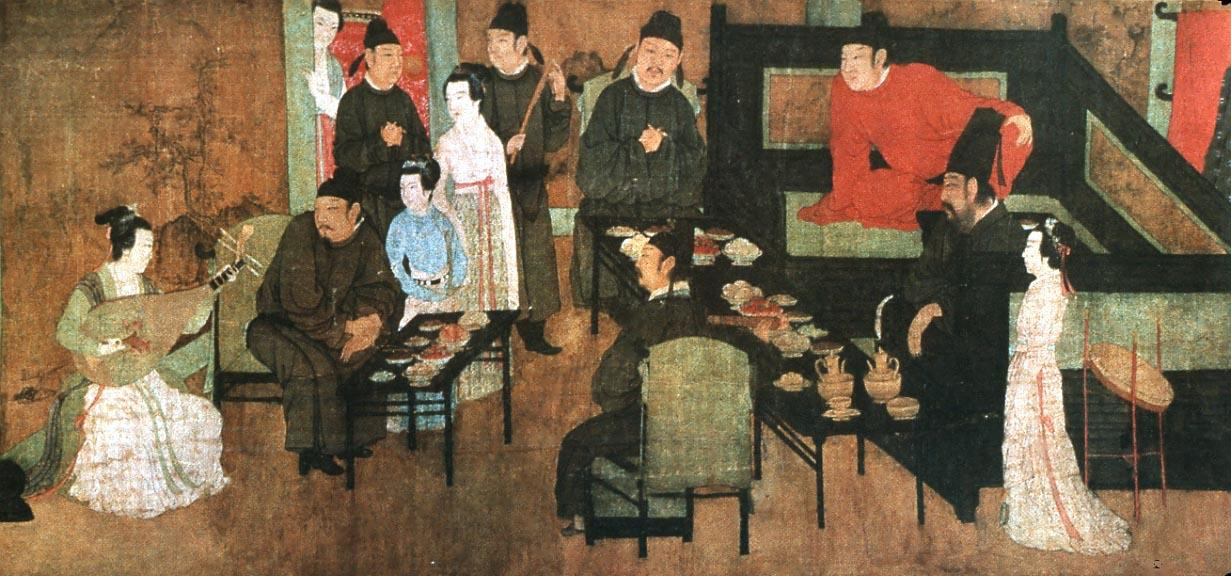Top 10 Chinese paintings(III):The Night Revels of Han Xizai

The Night Revels of Han Xizai
Han Xizai (902-970), born in Beihai (today’s Weifang City, Shandong Province) was from an official family. After his father was murdered by his political enemies, Han fled southward for shelter and served three generations of the royal Li family in the Southern Tang Dynasty (937-976), one of the Ten Kingdoms in southern China.
Many of Han Xizai’s policy suggestions were rebuffed by the last ruler Li Yu (937-978), and as a result, the Southern Tang Dynasty missed many chances to invade the Northern Song Dynasty (960-1127). When the Northern Song Dynasty armies pressed on to the border, Li Yu offered to appoint Han Xizai as a minister to stave off defeat.
Han knew well that the outcome was definitely settled but could not defy Li Yu’s order, so he indulged in a hedonistic life every day in the hopes that Li would not name him chancellor. Li Yu heard this and asked Gu Hongzhong (approx. 910-980), a royal painter, to spy on one of Han’s evening banquets in an effort to shame him into acting appropriately. From memory, Gu reproduced the lively scene of the banquet to show Li Yu.
The scroll of the Night Revels of Han Xizai is 28.7 centimeters high and 333.5 centimeters long, which is housed in the Palace Museum in Beijing. Gu split the scroll into five sections in order to paint the progress of the banquet, from listening to pipa, watching dancers, taking a rest, playing string instruments to seeing guests off. Between each section, Gu Hongzhong drew a screen to maintain a successive picture for viewers.
Gu Hongzhong’s painting is evaluated as having exquisite artistic merit. With accurate and delicate figures and smooth brush lines, the color of the Night Revels of Han Xizai radiates with magnificence and elegance. In the painting, Gu applied ink in a diverse, dynamic way. Noble ladies’ light make-up and gorgeous dresses are depicted in stark contrast with gentlemen’s black clothes. Under Gu’s brush, the furniture is painted by a dark black color that reflects Han’s elegant taste, but the designs on ladies’ dresses, curtains and veils are splendid with abundant colors, indicating the prosperous life of nobility at that time. The indulgences and corruption of nobility as well as the fall of the Southern Tang Dynasty are depicted through nuanced tints and shades simultaneously.
Portraying Han surrounded by joyful people, the painting captures the conflicting aspects of his personality—simultaneously wistful and aloof—while expressing his misery and self-indulgence. Herein lies the paramount artistic value conveyed by the vivid expressions of the painting. In addition to Gu Hongzhong, many painters depicted Han’s banquets on Li Yu’s orders, but only Gu’s has survived to the present day.
The Night Revels of Han Xizai was stored by the imperial storehouse in the Southern Song Dynasty (1127-1279) and then by the emperors Yongzheng and Qianlong in the Qing Dynasty (1616-1911). Pu Yi, the last emperor of the Qing Dynasty, carried this painting with him when he was removed from the Forbidden City and this painting was preserved somewhere by common people after World War II. The famous modern Chinese painter Zhang Daqian (1899-1983) bought it and transferred it to the Chinese government in 1953.
